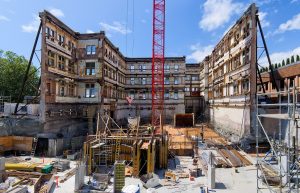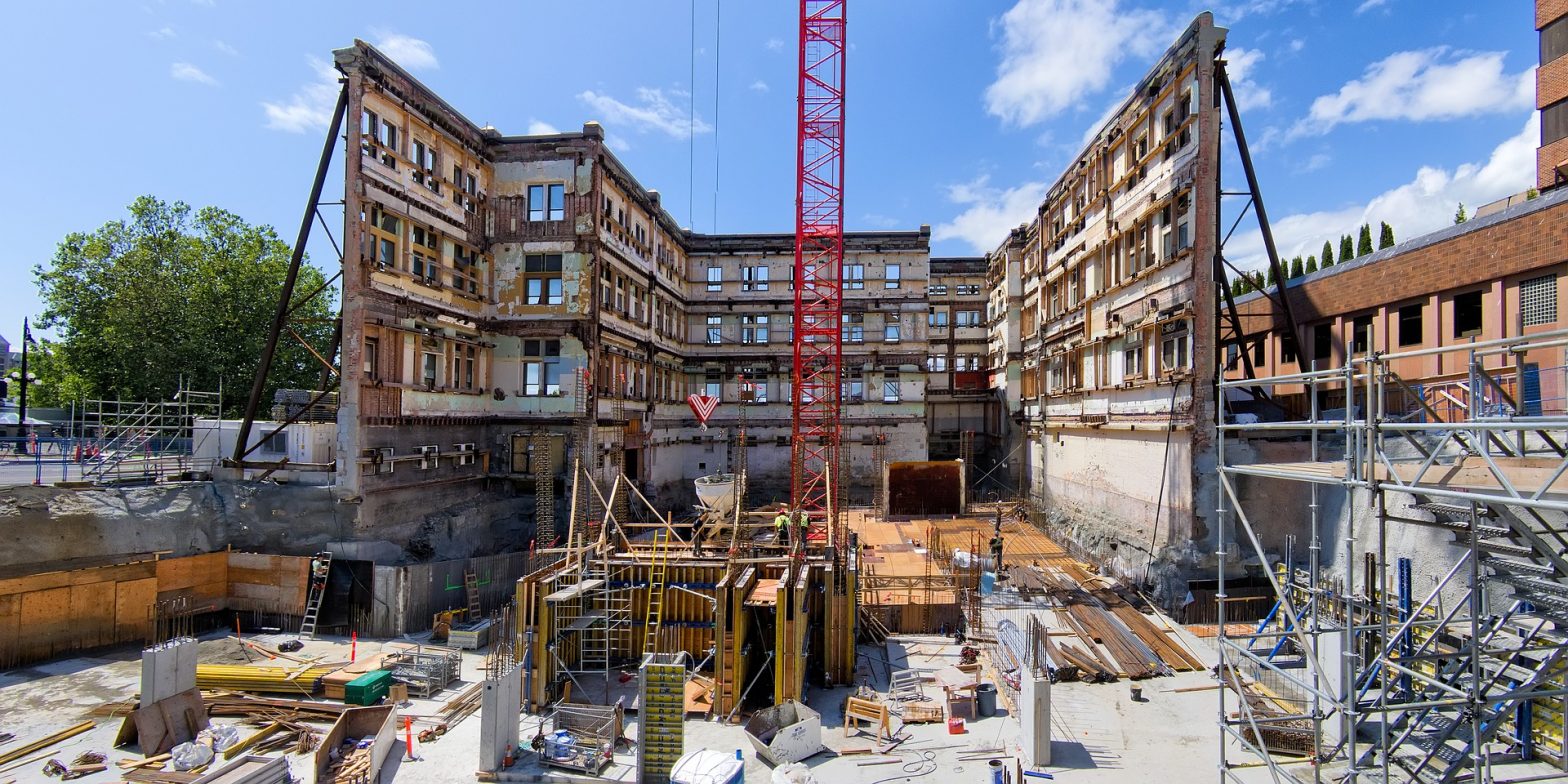
Temporary structures are part of the means and methods of construction and can serve a variety of purposes. Some temporary structures are directly employed in the construction of a project; others provide access to work or protect works or the public from construction hazards.
The conventional wisdom in the construction industry is that temporary structures, regardless of purpose, are means and methods of construction and are the sole responsibility of the construction contractor. This responsibility extends to their design. Consequently, many construction industry stakeholders give little thought to how and by whom temporary structures are designed. ‘Let the contractor figure it out’ is a common attitude. However, this approach is too simple. While there are good reasons for the contractor to have responsibility for temporary structures, project stakeholders, including owners and their design professionals should recognize that they may have an interest in who designs the temporary structures used on their projects.
The design of a temporary structure should reflect the purpose of the structure, the required performance and the risk of failure. These considerations always have site- and project-specific factors. For some structures, for example, formwork for conventional wood building foundations, the demands are small and the consequence of failure modest. Structures like these may not need to be rationally designed at all. When a proprietary product, like a scaffolding, is used exactly as intended by the manufacturer, engineering design may be unnecessary as well.
On the opposite end of the risk spectrum are temporary systems that protect the third parties and the general public from construction hazards. Examples include underpinning, excavation support, shoring of lot-line buildings and sidewalk sheds. However, a temporary structure can still be high-risk even without potential impact beyond the project site. Complex formwork and falsework and structures supporting cranes might be high-risk even if a failure would only affect the site.
Frequently, temporary structures are designed by engineers employed by contractors or vendors of proprietary temporary structure systems. However, for many medium- to high-risk temporary structures, when engineering design is required, the best choice of designer may be a specialty consulting engineer. The involvement of a consulting engineer can result in opportunities for risk reductions, as well as the potential for greater economy and performance.
A consulting engineer’s most obvious contributions to the design of a temporary structure are their technical capabilities. The capabilities of qualifications of contractor’s and vendor’s in-house engineering staff vary widely. But in relative terms, consultants usually have more tools available and more advanced in-house engineering experience. They are therefore able to offer more sophisticated analysis and design services. The economics of using consultants rather than in-house personnel will depend on the design capabilities of a particular contractor or vendor and whether more sophisticated engineering yields a more efficient structure. However, there are plenty of forensic case studies in which the failure of a contractor’s or vendor’s designer to understand or recognize complex structural behavior contributed to a serious failure.
General liability and umbrella insurance policies held by owners and contractors are typically limited to third party claims (from the perspective of the insurer) and exclude professional liability, including design errors and omission. Not all contractors and few owners carry or can obtain professional liability insurance. But even if an owner or contractor has a professional liability policy it too only covers third-party claims. This can result in losses from temporary structure failures being uninsured or under-insured, incentivizing injured parties to bring long-shot litigation against deep-pocketed parties that have little to no responsibility for the failure. Consulting engineers should, and usually do carry professional liability insurance. In the event of most claims against the engineer, either from a contractor client or some other party, coverage would be available from that policy.
Another advantage of involving a consulting engineer is that they provide a fresh and independent perspective on the problem that is different from those of the owner, their design professionals and the contractor. This sort of outside view can contribute new ideas and innovative approaches to solving construction problems. But more importantly, it can identify risk, especially if the rest of the project team is subject to “group think” or “go fever”. In addition, an independent consultant is better able to resist pressure to rush the design process or compromise safety than an in-house designer.
The owner’s interests in the performance of a temporary structural system should be conveyed through performance specifications. The performance specifications should be relatively narrow in scope and reasonable. Every provision in the performance specification should be germane to the needs of the project. Generally, the specific materials and configuration should be left to the contractor, but issues like design standards, impacts on permanent work and interfaces with third parties are appropriate topics for specifications. Likewise, the qualifications of the designer may be specified.
For temporary structures requiring engineering analysis and design, the designer should be required to hold appropriate licenses and professional liability insurance with reasonable policy limits. In some cases, the years of experience or recent project experience of the designer may be relevant. For high-risk temporary structures, requiring that the designer be independent of the contractor or alternatively that the design be independently peer-reviewed may be warranted. In special cases, the means and methods of construction are so entangled with the performance of permanent work that the owner’s design professionals should design them to ensure that the design intent is realized.
Perhaps the optimal situation for the design of most complex temporary structures would be a collaboration among the contractor responsible for the system, their consulting engineer who designs it and the design professional who devises project-specific performance standards. If the temporary structure interfaces with abutting property owners or infrastructure agencies, reviews by those parties can identify potential problems, allowing those risks to be managed proactively.
Interests in temporary structures extend to stakeholders beyond the contractor. In the best case, effective design and use of temporary structures reduces construction costs and maintains the contractor’s schedule. Similarly, a failure of a temporary structure is likely to cause delays and may increase project costs. A failure resulting in injury or property damage can entangle every involved in the project in litigation. It is therefore in the interest of the owner, design team, contractors, and even third parties to think about the design and designers of temporary structures.
The information and statements in this document are for information purposes only and do not comprise the professional advice of the author or create a professional relationship between reader and author.
